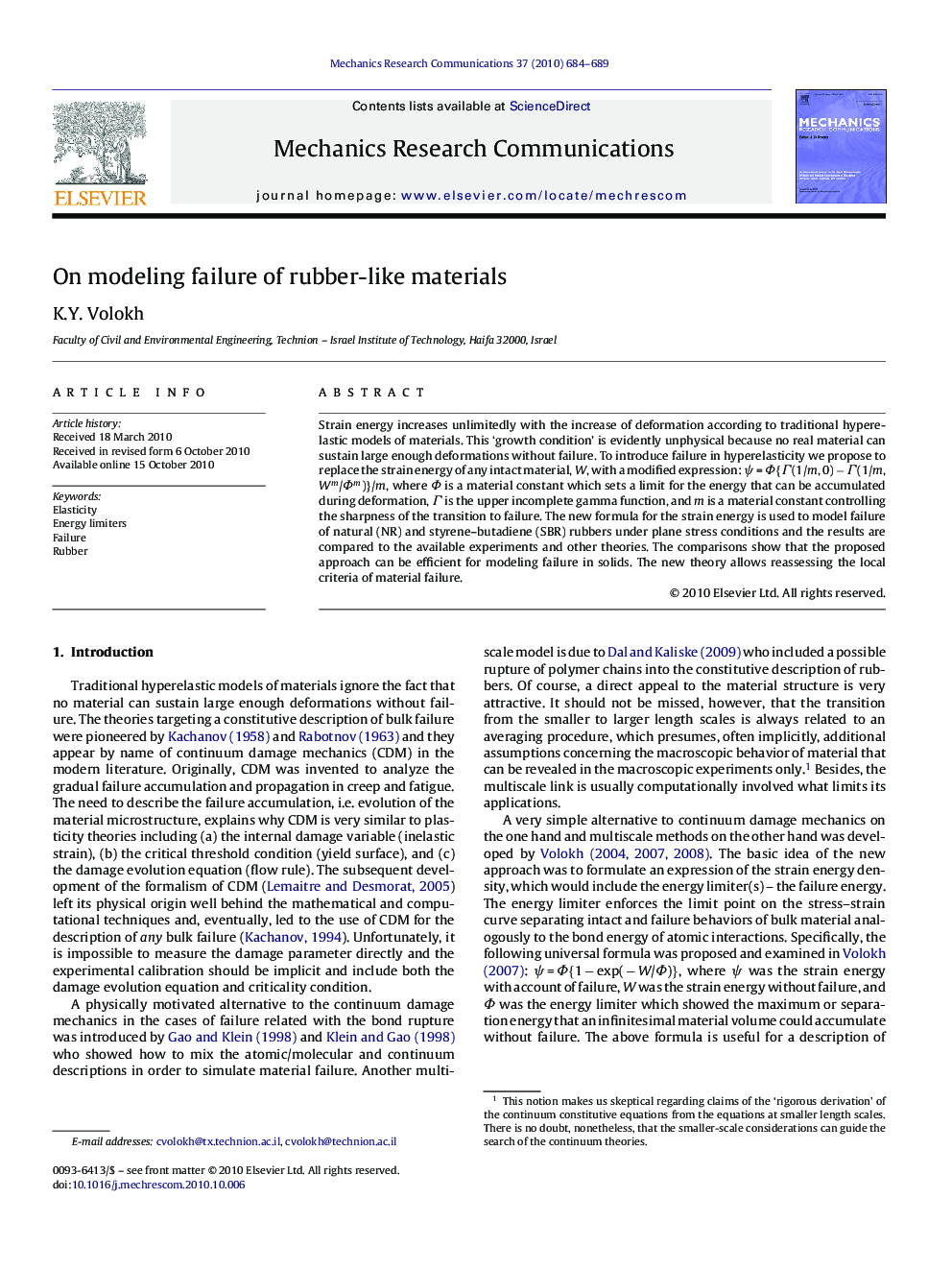| کد مقاله | کد نشریه | سال انتشار | مقاله انگلیسی | نسخه تمام متن |
|---|---|---|---|---|
| 803689 | 904736 | 2010 | 6 صفحه PDF | دانلود رایگان |

Strain energy increases unlimitedly with the increase of deformation according to traditional hyperelastic models of materials. This ‘growth condition’ is evidently unphysical because no real material can sustain large enough deformations without failure. To introduce failure in hyperelasticity we propose to replace the strain energy of any intact material, W, with a modified expression: ψ = Φ{Γ(1/m, 0) − Γ(1/m, Wm/Φm)}/m, where Φ is a material constant which sets a limit for the energy that can be accumulated during deformation, Γ is the upper incomplete gamma function, and m is a material constant controlling the sharpness of the transition to failure. The new formula for the strain energy is used to model failure of natural (NR) and styrene–butadiene (SBR) rubbers under plane stress conditions and the results are compared to the available experiments and other theories. The comparisons show that the proposed approach can be efficient for modeling failure in solids. The new theory allows reassessing the local criteria of material failure.
Journal: Mechanics Research Communications - Volume 37, Issue 8, December 2010, Pages 684–689